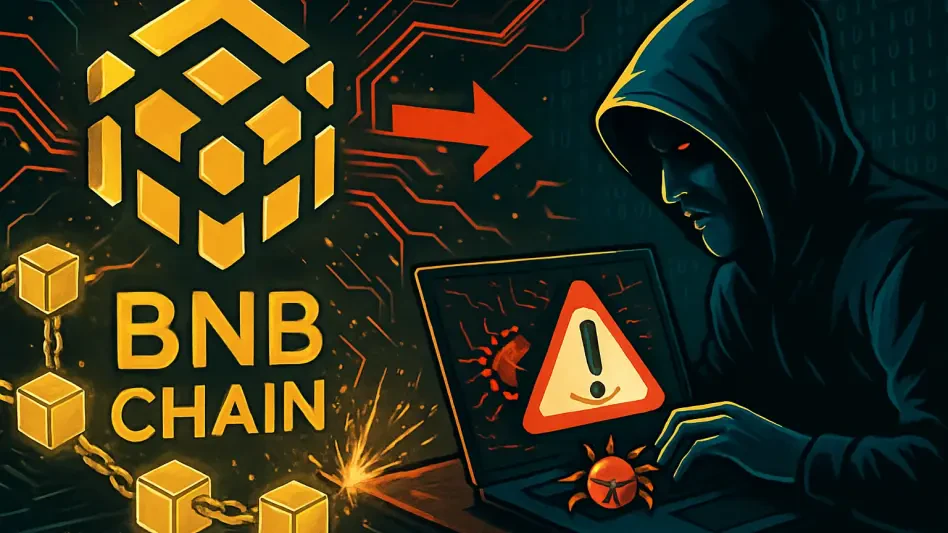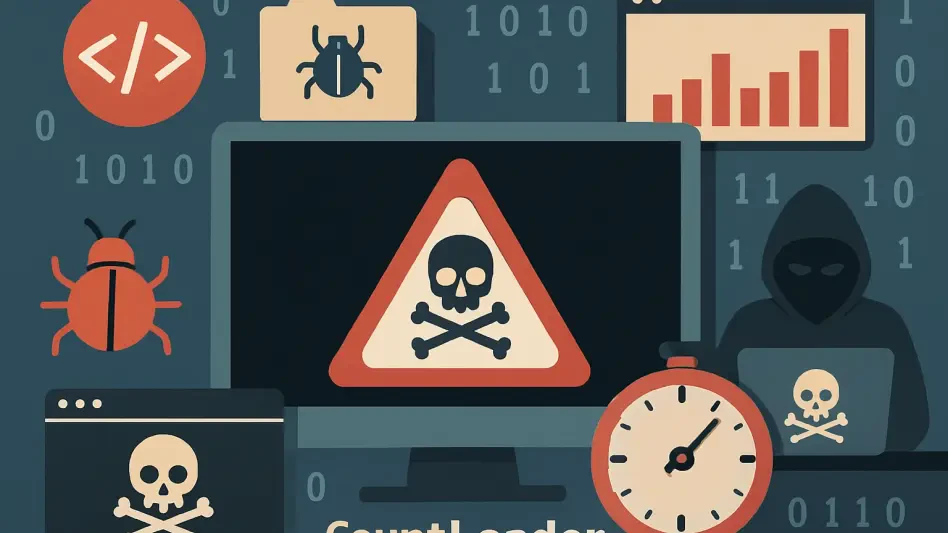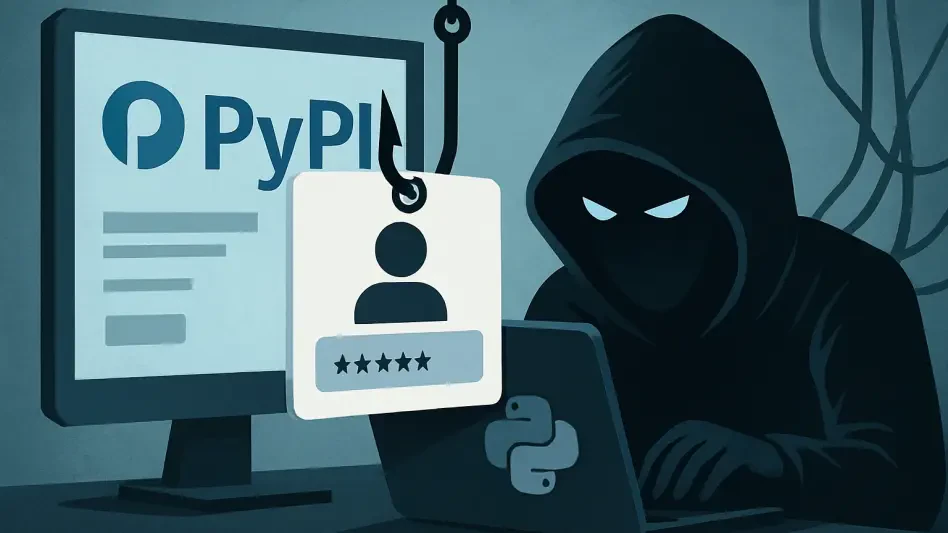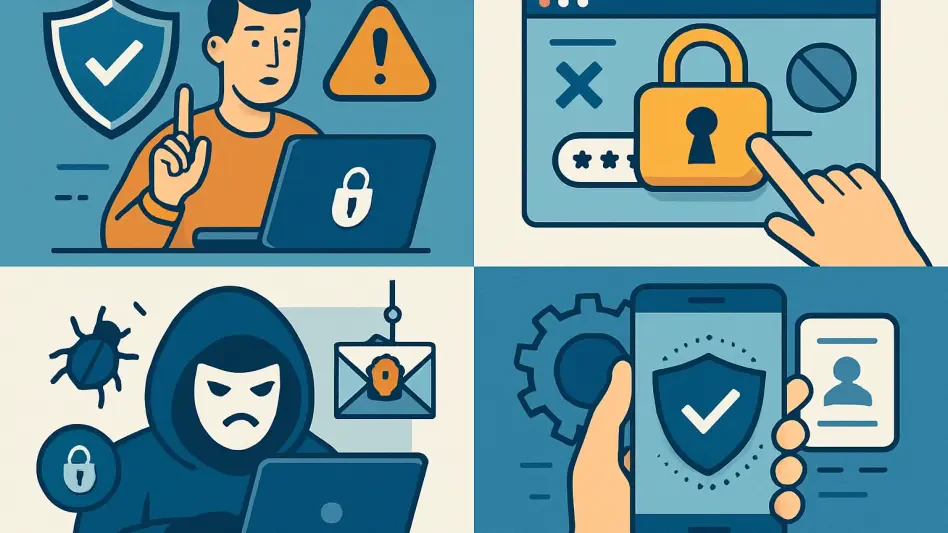In the rapidly evolving landscape of AI-driven cybersecurity technologies, human error has emerged as a critical vulnerability in digital work environments. The Thales Data Threat Report highlights that 31% of organizations that suffered data breaches in the past year attributed them to human error. Historically, the cybersecurity community has concentrated on technological advancements to counteract sophisticated threat tactics. However, there is now a paradigm shift towards integrating the human element as a fundamental part of the cybersecurity strategy, rather than viewing people as the weakest link.
The Concept of Human Firewalling
The term “human firewalling” encapsulates the evolving approach of emphasizing employee involvement in cybersecurity strategies. This shift acknowledges that every individual within an organization bears a collective responsibility to actively partake in security measures. Human firewalling has gained traction, as demonstrated by institutions and cybersecurity firms alike. For example, a KPMG white paper discusses the necessity of raising cybersecurity awareness and comprehensively educating employees on secure behaviors. In a similar vein, the University of Oklahoma has launched a human firewall training program, designed to arm students and employees with crucial digital self-defense skills. These initiatives highlight the increasing emphasis placed on involving people directly in cybersecurity defenses and underscore the importance of education and engagement in this arena.
The move towards human firewalling has shown that organizations can no longer rely solely on advanced technology to safeguard their digital assets. Instead, they must cultivate a security-conscious culture where employees are empowered to recognize and mitigate threats. This cultural shift is a recognition that human vigilance can significantly complement traditional technological defenses, creating a more robust and resilient cybersecurity posture. By understanding the specific risks they might encounter and how to counteract them, employees can become active participants in the defense against cyber threats. This synergy between human involvement and technology is essential for building comprehensive cybersecurity strategies.
Leadership Commitment
Effective implementation of a human-first cybersecurity approach hinges on unequivocal support and dedication from organizational leadership. Leaders must convincingly communicate the significance of cybersecurity initiatives and demonstrate their unwavering commitment to these goals. Without perceived leadership commitment, achieving employee buy-in becomes a challenging endeavor. Strong leadership commitment sets the tone for the entire organization, ensuring that cybersecurity initiatives are prioritized and integrated into the company culture. This alignment helps in fostering a unified approach where every member of the organization understands the importance of their role in maintaining security.
By embedding cybersecurity values at the leadership level, organizations can drive better engagement and adherence to security protocols. Top-down commitment reassures employees that their efforts in cybersecurity are valued and essential to the overall mission of the company. This leadership-driven approach not only motivates employees but also creates a collaborative environment where cybersecurity is seen as a shared responsibility. Leaders play a crucial role in modeling good cybersecurity practices, setting clear expectations, and providing the necessary resources for cybersecurity education and training. Ensuring leadership is visibly active in cybersecurity efforts reinforces its importance and encourages a more vigilant and proactive workforce.
Role-Centric Cybersecurity Training
Traditional, generic cybersecurity training modalities often fall short in addressing the specific threats that different roles within an organization might encounter. Instead, the focus should shift to role-centric cybersecurity training, tailored to the unique responsibilities and risks associated with particular functions. This targeted training can help prevent issues like phishing, unintended data sharing, and other vulnerabilities that are more relevant to certain roles. By receiving training that directly pertains to their daily tasks, employees can better understand and mitigate role-specific threats, enhancing overall security awareness across the organization.
Targeted training fosters a more informed workforce, with employees who are equipped to handle the unique challenges they face. This approach ensures that cybersecurity education is not a one-size-fits-all solution but one that addresses the nuances of each role. Moreover, role-centric training makes it easier for employees to grasp the relevance of cybersecurity measures to their specific functions. With a clearer understanding of the threats and the appropriate countermeasures, employees are more likely to engage with and adhere to security protocols, thereby reducing the incidence of human error. The ultimate goal is to provide employees with the knowledge and tools they need to protect sensitive information and maintain robust security.
Simplification of Security Protocols
Security protocols, while essential, often become effective only when they are accessible and understandable to every member of an organization. Complex protocols can inadvertently create vulnerabilities and inhibit employees from recognizing or acting against potential threats. The necessity of simplifying security measures cannot be overstated. Simplified protocols ensure that everyone within the organization understands them and can follow them with ease. When security processes are straightforward, employees are more likely to comply with them, reducing the risk of human error and promoting a more secure working environment.
Implementing user-friendly security protocols minimizes confusion and resistance among employees. When protocols are overly complicated, employees may feel overwhelmed or disregard them altogether, thereby increasing susceptibility to security breaches. Simplification not only facilitates adherence but also empowers employees to take proactive steps in safeguarding data. Clear, concise instructions demystify cybersecurity and make it accessible to all, regardless of their technical expertise. This approach ultimately helps in building a culture where security is everyone’s responsibility, and vigilance becomes an integral part of daily operations.
Designation of Cybersecurity Champions
Appointing dedicated individuals to guide and oversee the shift towards a human-first cybersecurity approach is an integral aspect of this strategy. These cybersecurity champions act as intermediaries between the cybersecurity department and the rest of the organization, facilitating communication and fostering a security-conscious culture. Cybersecurity champions play a pivotal role in promoting best practices and ensuring that cybersecurity remains a top priority across all departments. Their presence demystifies cybersecurity, making it a more approachable topic and encouraging engagement and participation from all employees.
These champions serve as role models and resources for their colleagues, providing guidance and answering questions related to cybersecurity. Their efforts are instrumental in disseminating critical information and reinforcing the importance of adhering to security protocols. By appointing knowledgeable and dedicated individuals to this role, organizations can ensure that cybersecurity messages resonate more effectively with the workforce. This strategic placement also helps in quickly addressing any lapses in security awareness, thereby maintaining a vigilant and informed team. Cybersecurity champions are crucial in cultivating a proactive and resilient cybersecurity culture within the organization.
Comprehensive Behavioral Analysis
Monitoring user behavior is as crucial as overseeing technical systems when it comes to maintaining cybersecurity. Comprehensive behavioral analysis involves observing and analyzing user behaviors, such as unusual data access requests and abnormal login patterns. This approach enables organizations to detect and mitigate insider threats and other anomalies more effectively. By understanding and scrutinizing behavioral patterns, organizations can identify potential security breaches before they occur, allowing for proactive measures to be taken. Behavioral analysis adds an extra layer of security by providing insights that might not be apparent through technology alone.
Implementing behavioral analysis helps in creating a more nuanced security framework that addresses not just external threats but also internal vulnerabilities. It enables organizations to tailor their security measures based on observed behaviors, thereby enhancing overall protection. This approach is particularly effective in identifying and addressing insider threats, which can be more difficult to detect using traditional methods. By combining behavioral analysis with technological defenses, organizations can create a comprehensive security strategy that is robust and adaptable to evolving threats. This synergy ensures that both human and technical aspects of security are addressed, leading to a more secure and resilient organization.
Synergy Between Technological Defenses and Human Vigilance
Human firewalls do not replace traditional cybersecurity tools but serve to complement and strengthen them. Proper education and awareness enable employees to better understand threats and the necessary steps to mitigate them. Employees need not be proficient in using advanced cybersecurity platforms; rather, they should be knowledgeable about common threats and how to utilize basic tools like multi-factor authentication and VPNs effectively. This synergy between human vigilance and technological defenses ensures a robust and comprehensive approach to combating cyber threats. When employees are well-informed, they can act as an additional layer of defense, recognizing and responding to potential threats in real-time.
Integrating human vigilance with technological defenses creates a more cohesive and resilient security framework. This approach acknowledges that while technology can detect and prevent many threats, human insight and awareness are invaluable in addressing more nuanced or sophisticated attacks. By fostering a culture of security awareness, organizations can leverage the strengths of their workforce to enhance overall cybersecurity. Employees trained to recognize phishing attempts, suspicious activities, and other common threats can act quickly to prevent potential breaches. This collaborative effort ensures that security is a shared responsibility, making the organization as a whole more secure.
Strategic Implementation of AI Cybersecurity Tools
Implementing AI cybersecurity tools requires a strategically balanced approach that integrates human insight with technological capabilities. While machine learning can significantly enhance threat detection and prevention, human discretion remains essential. Without proper understanding and training, employees might overlook crucial AI-generated security alerts, thereby nullifying the benefits of these advanced technologies. The strategy ensures people are aware of the ramifications of their actions and can effectively interpret and act on AI alerts. This balanced approach fosters a proactive security culture while mitigating over-reliance on automated systems, ensuring that AI tools serve to augment human capabilities rather than replace them.
Effective implementation of AI tools involves continuous education and training for employees to ensure they understand how to use these technologies effectively. Employees should be equipped with the knowledge to interpret AI alerts and take appropriate actions. Additionally, fostering an environment where human judgment is valued alongside technological tools enhances the overall security posture. This approach ensures that AI tools are used to their fullest potential, with employees providing the necessary context and critical thinking to address complex threats. By combining the strengths of AI with human vigilance, organizations can create a more dynamic and responsive cybersecurity strategy.
Empowering Employees Through Training and Awareness
In the swiftly changing field of AI-powered cybersecurity technologies, human error has become a significant vulnerability in digital work environments. According to the Thales Data Threat Report, 31% of organizations that experienced data breaches in the past year cited human error as the cause. Historically, the focus within the cybersecurity community has been on advancing technology to outsmart sophisticated threat tactics. Recently, however, there’s been a significant shift in approach. Instead of viewing people strictly as the weakest link in security, there’s a growing recognition of integrating the human element as a crucial part of a holistic cybersecurity strategy. This paradigm shift emphasizes that addressing human factors—such as training, awareness, and behavior modification—is just as important as technological solutions. By prioritizing the education and involvement of employees, organizations aim to create a more secure digital environment that leverages both human intelligence and advanced technology to prevent breaches effectively.







